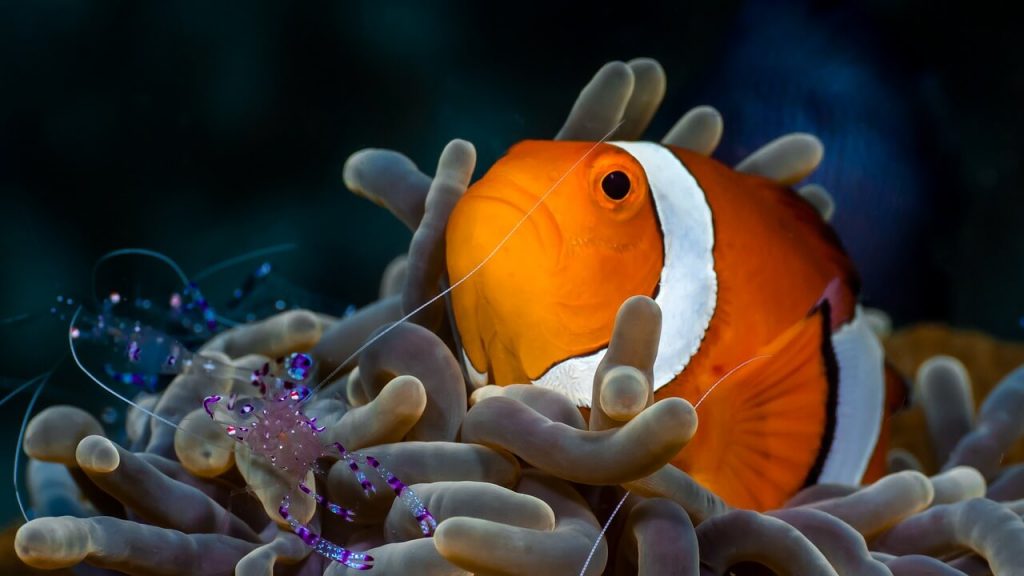This post may contain affiliate links. As an amazon associate I earn from qualifying purchase. Learn more
I was always fascinated by the symbiotic relationship clownfish and anemones have. It’s one of the reasons I started my saltwater aquarium.
However, I quickly realized that anemones require established aquariums, and beginners should not keep them in new tanks. But I was not giving up on the clownfish yet. Do clownfish need an anemone in the tank?
Captive-raised clownfish don’t need an anemone to survive, although having an anemone in your clownfish tank is a great way to recreate their natural habitat. On the other hand, wild clownfish need an anemone to protect themselves from predators.
Since clownfish don’t need anemones, I decided to add a pair of clownfish to my tank. They are doing great, but I plan to add a bubble tip anemone in the future. We will see how it will go.
If you are interested in learning more about the relationship between clowns and sea anemones, keep reading.

Contents
Clownfish and Anemone Relationship
Many aquarists get into this hobby because they want to recreate a part of the reef world. The relationship between the clownfish and the sea anemone is one of the most iconic relationships in the animal world.
In fact, it was an inspiration for a popular animated movie about clownfish. Unlike in “Finding Nemo,” wild clownfish rarely stray far from the anemone. Let’s learn more about each animal, and later we will see how clownfish and anemones help each other survive in the wild.
Clownfish
Clownfish continue to be one of the most popular fish in the saltwater aquarium hobby. There are 30 different species of clownfish recognized so far. Most of the species share a similar appearance; yellow, orange, or reddish body with white bars.
They are endemic to the waters of the Indian Ocean, including the Great Reef Barrier, the Pacific Ocean, and the Red Sea, where they inhabit shallow reefs.
Clownfish form a symbiotic mutualistic relationship with the sea anemone helping each other in many ways.
Sea Anemone
Sea anemones, named after the anemone( terrestrial flowering plant), are marine animals of the order Actiniaria. They are related to corals, jellyfish, and hydra.
There are many different species of sea anemones both found in the deep sea and shallow waters. They form mutualistic relationships with single-celled algae species such as zooxanthellae or zoochlorellae.
Some sea anemones form a mutualistic relationship with fish, such as the clownfish.
How the Clownfish and Anemone Help Each Other?
From the more than a thousand species of anemones in the ocean, around ten species are compatible with the clownfish.
The symbiosis between the clownfish and the sea anemone is achieved in many ways, beneficial for both species.
The sea anemone protects the clownfish from predators by providing shelter, and in return, the clownfish brings food for the anemone.
Why Are Clownfishes Not Stung by Sea Anemones?
Most fish species will die if stung by anemones tentacles but not the clownfish. Why is that? How are they able to survive and live among anemone tentacles?
Several theories explain their ability to stay unharmed by the sea anemone tentacles.
Clownfish have a thick layer of mucus on their skin, protecting them from the anemone sting. They are born with mucus on their bodies that gets thicker as they age, and when they are adults, it’s already four times thicker than any other fish. In addition, they get another layer of mucus from the anemone itself.
Other theories suggest that clownfish acclimate by rubbing themselves into the anemone tentacles. They do it repeatedly until they become immune to the anemone sting.
Whatever the reason, one thing is for sure. The relationship between the clownfish and the sea anemone evolved throughout time to become mutualistic for both species.
Interested to learn more about Clownfish? Check out our other posts:
- Why is my clownfish twitching?
- Why is my clownfish pair fighting?
- How to tell if my clownfish is happy?
- What is the best temperature for clownfish?
- How long does it take for clownfish to pair?
Final Thoughts
Captive-bred clownfish don’t need an anemone to survive. In many ways, it’s even better to keep clownfish without an anemone.
Most of us got into this hobby because we want to recreate a part of the ocean. The relationship between the clownfish and the sea anemone is one of the most incredible bonds in the animal world.
However, recreating that relationship in our aquariums is not that simple as it sounds. Adding an anemone to your tank will increase the aggression in your clowns.
Additionally, anemones require special conditions, mature and established tanks. Some types of anemones will never adapt to aquarium conditions.
I am not saying this to discourage you. In fact, many aquarists successfully keep anemones in their tanks. It just takes time and experience. And we all know that patience is a virtue in this hobby.